Will Pfeifer's Blog, page 14
September 12, 2016
Movies I Watched in August, Part 2
Part Two (of three!) of the August recap -- I watched a lot of movies this month!
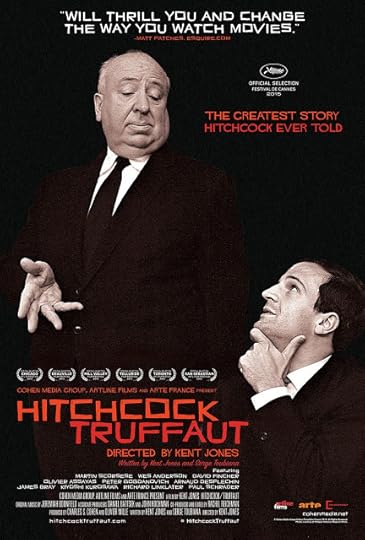
I’ve owned the book this movie was based on for years. It’s a fascinating conversation between Alfred Hitchcock and Francois Truffaut, who was a groundbreaking film critic before he became one of the legendary directors of the French New Wave. The book itself goes through Hitchcock’s career (and actually, before that, his early life), taking each film in stride with Hitch explaining – usually with the help of extensive still photos and frame blow-ups – how he directed some of his classic scenes. You know the ones – the Statue of Liberty climax of “Saboteur,” the dinner conversation in “Shadow of a Doubt” and, of course, the shower scene in “Psycho.” I guess I was expecting – and sort of hoping – that’s what “Hitchcock Truffaut” the movie would be, a deep dive into Hitch’s techniques and how he perfected (and perceived) them, but that’s not what it is, not really. It’s a documentary about the book itself – how Truffaut conceived it, how it was put together (with the help of a very dedicated translator) and how it was received (big-name directors chime in here, including Wes Anderson, Martin Scorsese and David Fincher.) It’s a good movie, don’t get me wrong, and fascinating for a film nerd like me, but I guess I was hoping it would be more about the movies and less about the book.
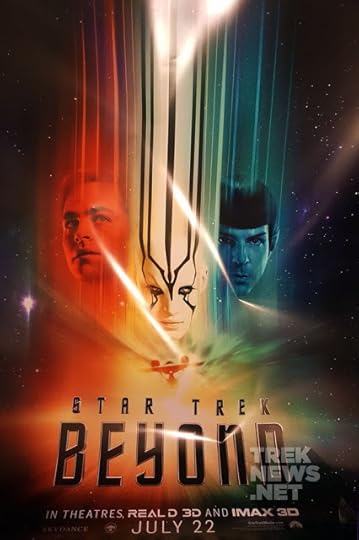
As I shockingly revealed on the 50th anniversary of “Star Trek” last week, I’ve only seen two episodes of the TV series in any of its forms. However, I have seen every single “Star Trek” movie, most of them (including the interminable “Star Trek: The Motion Picture,” in the theater, and have enjoyed them all to various degrees. And this one? I liked it a lot, better than J.J. Abrams 2009 “Star Trek” reboot and much, much more than 2013’s “Star Trek Into Darkness.” I felt like everything came together nicely in “Beyond,” with the actors well-established in their roles, the ghosts of the original series finally put to rest (with the “death” of the old Spock) and a storyline that was genuinely exciting and suspenseful. Even the use of the Beastie Boy’s “Sabotage,” which seems so grindingly off-note in the trailer, worked nicely here. Apparently, though, in the grand scheme of things, "Star Trek Beyond" was a box office disappointment, which is a shame because after watching this movie, I’m dying to see the next one. If, that is, there is a next one.
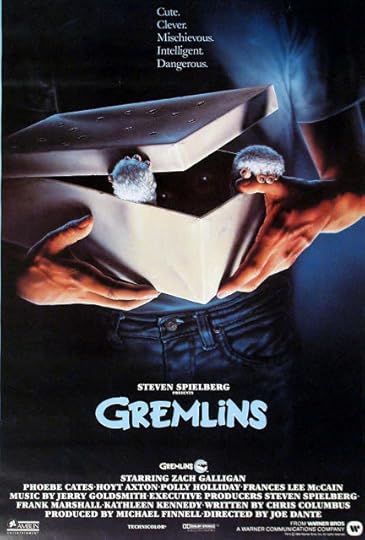
We decided to show this 1984 comedy (fantasy? Horror movie?) to the kid, figuring she loves cute things and wanton destruction, so it would be right up her alley. She liked it, I suppose, though she got pretty hung up on the (admittedly) confusing rules about keeping Gremlins. Among her questions: Can you bathe them? What if they get wet while drinking? When does the “don’t feed after midnight” prohibition elapse? Sunrise? Noon? She makes some good points, but they certainly don’t hurt the movie’s fun factor. It’s so fast-paced, clever and violent (a lot of people – innocent people – are killing by the title characters) that it can’t help but be entertaining. It’s the perfect movie for director Joe Dante to helm, a good-natured (though, like I said, violent) comedy that pays tribute to all sorts of Hollywood history (especially “It’s a Wonderful Life.”) Plus, there’s Phoebe Cates’ classic monologue about the Christmas when her dad played Santa and wound up getting stuck in the chimney – and dying. That, to be honest, is the reason we waited to show “Gremlins” to Allie – she didn’t learn the truth about Santa until last fall -- and I definitely didn't want her to learn it this way.
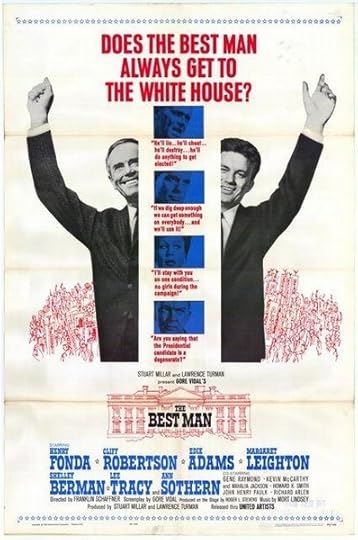
Interested, dated (and interestingly dated) political drama about the competition between two contenders for their party's presidential nomination. One of them, the older, wiser, more trustworthy candidate, is played by (who else?) Henry Fonda. The other, a younger, less scrupulous, more hard-nosed candidate, is played by Cliff Robertson. What makes the movie -- written by consumate insider Gore Vidal and directed by a pre-"Planet of the Apes" Franklin Schaffner -- interesting is that the lines aren't quite so cleanly drawn. Fonda has a history of extra-marital affairs that everyone has been covering up, and if Robertson is a weasel (and he is), at least he's an unapologetic one. The big twist involves a possible homosexual affair deep in Robertson's military past (with Shelley Berman, of all people!), and the suspense comes from learning whether or not Fonda will use this bit of salacious gossip (whether it's true or not) to wreck Robertson's chances. The movie ends with a twist that manages to be both underwhelming and surprising, so I won't spoil it here, on the off chance that you actually are inspired to watch a 52-year-old political movie thanks to this blog post. Bonus points go to the cast, which also includes Edie Adams, Ann Sothern, Kevin McCarthy and one of my favorite actors the pre-Code era, the great Lee Tracy.

I’ve owned the book this movie was based on for years. It’s a fascinating conversation between Alfred Hitchcock and Francois Truffaut, who was a groundbreaking film critic before he became one of the legendary directors of the French New Wave. The book itself goes through Hitchcock’s career (and actually, before that, his early life), taking each film in stride with Hitch explaining – usually with the help of extensive still photos and frame blow-ups – how he directed some of his classic scenes. You know the ones – the Statue of Liberty climax of “Saboteur,” the dinner conversation in “Shadow of a Doubt” and, of course, the shower scene in “Psycho.” I guess I was expecting – and sort of hoping – that’s what “Hitchcock Truffaut” the movie would be, a deep dive into Hitch’s techniques and how he perfected (and perceived) them, but that’s not what it is, not really. It’s a documentary about the book itself – how Truffaut conceived it, how it was put together (with the help of a very dedicated translator) and how it was received (big-name directors chime in here, including Wes Anderson, Martin Scorsese and David Fincher.) It’s a good movie, don’t get me wrong, and fascinating for a film nerd like me, but I guess I was hoping it would be more about the movies and less about the book.

As I shockingly revealed on the 50th anniversary of “Star Trek” last week, I’ve only seen two episodes of the TV series in any of its forms. However, I have seen every single “Star Trek” movie, most of them (including the interminable “Star Trek: The Motion Picture,” in the theater, and have enjoyed them all to various degrees. And this one? I liked it a lot, better than J.J. Abrams 2009 “Star Trek” reboot and much, much more than 2013’s “Star Trek Into Darkness.” I felt like everything came together nicely in “Beyond,” with the actors well-established in their roles, the ghosts of the original series finally put to rest (with the “death” of the old Spock) and a storyline that was genuinely exciting and suspenseful. Even the use of the Beastie Boy’s “Sabotage,” which seems so grindingly off-note in the trailer, worked nicely here. Apparently, though, in the grand scheme of things, "Star Trek Beyond" was a box office disappointment, which is a shame because after watching this movie, I’m dying to see the next one. If, that is, there is a next one.

We decided to show this 1984 comedy (fantasy? Horror movie?) to the kid, figuring she loves cute things and wanton destruction, so it would be right up her alley. She liked it, I suppose, though she got pretty hung up on the (admittedly) confusing rules about keeping Gremlins. Among her questions: Can you bathe them? What if they get wet while drinking? When does the “don’t feed after midnight” prohibition elapse? Sunrise? Noon? She makes some good points, but they certainly don’t hurt the movie’s fun factor. It’s so fast-paced, clever and violent (a lot of people – innocent people – are killing by the title characters) that it can’t help but be entertaining. It’s the perfect movie for director Joe Dante to helm, a good-natured (though, like I said, violent) comedy that pays tribute to all sorts of Hollywood history (especially “It’s a Wonderful Life.”) Plus, there’s Phoebe Cates’ classic monologue about the Christmas when her dad played Santa and wound up getting stuck in the chimney – and dying. That, to be honest, is the reason we waited to show “Gremlins” to Allie – she didn’t learn the truth about Santa until last fall -- and I definitely didn't want her to learn it this way.

Interested, dated (and interestingly dated) political drama about the competition between two contenders for their party's presidential nomination. One of them, the older, wiser, more trustworthy candidate, is played by (who else?) Henry Fonda. The other, a younger, less scrupulous, more hard-nosed candidate, is played by Cliff Robertson. What makes the movie -- written by consumate insider Gore Vidal and directed by a pre-"Planet of the Apes" Franklin Schaffner -- interesting is that the lines aren't quite so cleanly drawn. Fonda has a history of extra-marital affairs that everyone has been covering up, and if Robertson is a weasel (and he is), at least he's an unapologetic one. The big twist involves a possible homosexual affair deep in Robertson's military past (with Shelley Berman, of all people!), and the suspense comes from learning whether or not Fonda will use this bit of salacious gossip (whether it's true or not) to wreck Robertson's chances. The movie ends with a twist that manages to be both underwhelming and surprising, so I won't spoil it here, on the off chance that you actually are inspired to watch a 52-year-old political movie thanks to this blog post. Bonus points go to the cast, which also includes Edie Adams, Ann Sothern, Kevin McCarthy and one of my favorite actors the pre-Code era, the great Lee Tracy.
Published on September 12, 2016 18:48
September 6, 2016
Movies I watched in August, Part 1
For some unexplained reason I managed to see a lot of movies last month, so this recap is going to split into a whopping three parts. Here's part one...
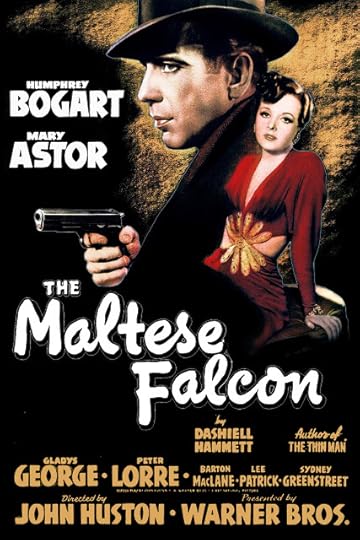
Classic, proto-film noir from 1941. It’s both the movie that made Humphrey Bogart a major movie star and the movie on which John Huston made his directing debut. (And, come to think of it, it also gave character actor Sydney Greenstreet his screen debut at the ripe old age of 62.) I’ve seen it a dozen or so times, but I’m always happy to watch it again because I can never keep the plot straight from one viewing to another. Watched it this time for an episode of our podcast, Out of Theaters. You can read more about the movie here – and while you’re there, why not click on that little arrow and listen to the episode? It’s a good one – I promise.
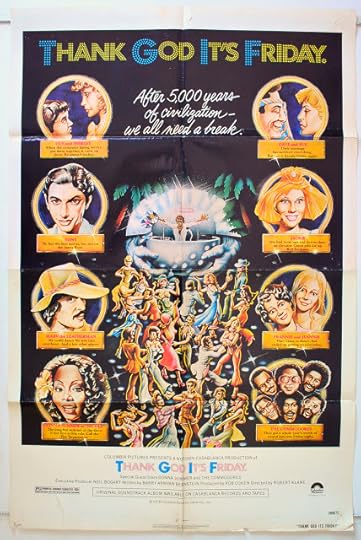
People who think “Saturday Night Fever” was a cheap, shallow cash-in on the disco craze (it's not) have never witnessed an actual cheap, shallow cash-in on the disco craze. Like, say, for instance, this movie. Taking place on a single night at a hot (and fictional) new nightclub, The Zoo, “Thank God It’s Friday” weaves together several storylines like some sort of low-rent “Nashville.” There’s the wife looking for excitement and the husband looking for the door; the two teens who sneak in to enter the dance contest (one of them future Berlin singer Terri Nunn); the cheery guy dressed in leather also interested in said contest; the young women looking for love in vague, forgettable ways (one of them played by a young Debra Winger); the young men looking for love in vague, forgettable ways; ; the mismatched couple who met via computer; the equipment manager of the Commodores who is late for the gig; the DJ whose show is going out over the airwaves; the vaguely evil club (a young Jeff Goldblum) trying to seduce the wife looking for excitement; and, at the center of it all, the struggling singer (Diana Ross) trying to perform her big song (“Last Dance”) and become a star (she already was, obviously). Despite some mild language and a lot of drug references (it was 1978, after all), “Thank God It’s Friday” plays like a TV movie, with clean-cut actors and an astonishingly brightly lit disco. (It’s no surprise that director Robert Klane spent most of his time helming TV shows.) As a movie, it’s not much. As an artifact of the era, it’s fascinating, if not actually good.
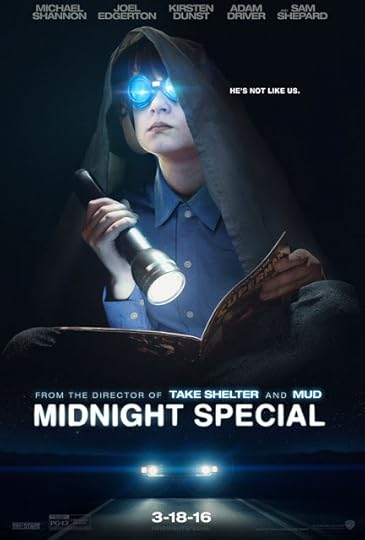
This one has a great cast – Michael Shannon, Kristen Dunst, Adam Driver, Sam Shepard and Bill Camp (Detective Box on “The Night Of”) – and a creepy premise, but it just didn’t add up to what I was hoping for. Shannon plays the father of a boy with special powers who has inspired a creepy, Warren Jeffs-like cult and aroused the interest of various clandestine government agencies. As the movie starts, Shannon has kidnapped the boy (well-played by Jaeden Lieberher) and is on the run. Those are the best parts of the movie, when you’re not sure exactly what has happened or why everyone wants this kid. Then that kid crashes a spy satellite into a gas station, and you get a pretty good idea. “Midnight Special” is full of great moments, wonderful visuals and flights of imagination, but the ending reminded me of a cross between “The Abyss” and “Tomorrowland,” of all things, and it just didn’t live up to its potential. Worth a watch, for sure, but don’t go in thinking it’s one of the year’s best movies.
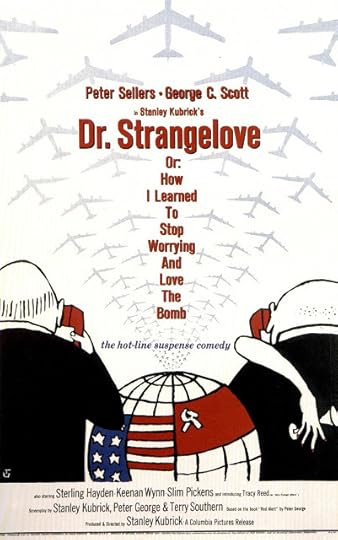
A classic, obviously. And one of my all-time favorites. Watched it again for the podcast, and since the episode drops on Sept. 12, I’ll save my comments for then. (And I’ll update the link, too.) But, in the meantime, let me point this out: It's a Stanley Kubrick movie that jumps back and forth among three locations, involves several characters and climaxes (pretty much literally) with the end of the world, and it still manages to sneak in at a mere 95 minutes. Now that, my friends, is efficient storytelling.
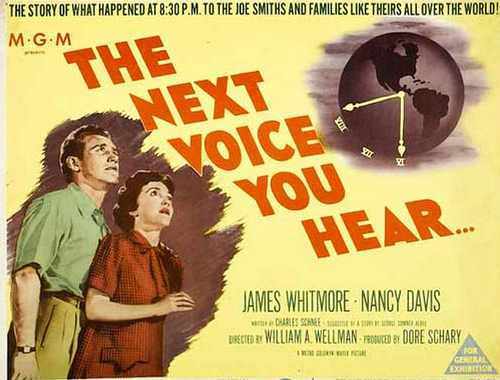
I’ve seen this before, but it aired on TCM recently, so I decided to give it another look, mostly because film critic J. Hoberman devotes some space to it in his history of postwar movies, “Army of Phantoms.” The movie is a ham-handed fable about what happens when the voice of God (yes, that voice of that God) begins making regularly scheduled radio broadcasts. Because we never hear the voice (mostly thanks to some semi-clever editing), we’re left to gauge its impact by observing an all-American family consisting of dad (James Whitmore), mom (Nancy Reagan) and son (Gary Gray), all unpleasant in their own special, boring way. You can tell this is a fable because their names are actually Joseph and Mary (and Johnny) Smith, but the movie never does anything imaginative with its admittedly outlandish premise except to reassure us that God’s looking out for the good ol’ U.S. of A after all. The single memorable scene in the whole movie comes when Joe gets drunk with a doubting buddy at a sleazy bar, but soon enough he regains his moral equilibrium and then it’s back to life on the straight and narrow. Too bad.
Coming next: Hitchcock, Truffaut, Gremlins, Star Trek and a dirty presidential campaign. No, not this one.

Classic, proto-film noir from 1941. It’s both the movie that made Humphrey Bogart a major movie star and the movie on which John Huston made his directing debut. (And, come to think of it, it also gave character actor Sydney Greenstreet his screen debut at the ripe old age of 62.) I’ve seen it a dozen or so times, but I’m always happy to watch it again because I can never keep the plot straight from one viewing to another. Watched it this time for an episode of our podcast, Out of Theaters. You can read more about the movie here – and while you’re there, why not click on that little arrow and listen to the episode? It’s a good one – I promise.

People who think “Saturday Night Fever” was a cheap, shallow cash-in on the disco craze (it's not) have never witnessed an actual cheap, shallow cash-in on the disco craze. Like, say, for instance, this movie. Taking place on a single night at a hot (and fictional) new nightclub, The Zoo, “Thank God It’s Friday” weaves together several storylines like some sort of low-rent “Nashville.” There’s the wife looking for excitement and the husband looking for the door; the two teens who sneak in to enter the dance contest (one of them future Berlin singer Terri Nunn); the cheery guy dressed in leather also interested in said contest; the young women looking for love in vague, forgettable ways (one of them played by a young Debra Winger); the young men looking for love in vague, forgettable ways; ; the mismatched couple who met via computer; the equipment manager of the Commodores who is late for the gig; the DJ whose show is going out over the airwaves; the vaguely evil club (a young Jeff Goldblum) trying to seduce the wife looking for excitement; and, at the center of it all, the struggling singer (Diana Ross) trying to perform her big song (“Last Dance”) and become a star (she already was, obviously). Despite some mild language and a lot of drug references (it was 1978, after all), “Thank God It’s Friday” plays like a TV movie, with clean-cut actors and an astonishingly brightly lit disco. (It’s no surprise that director Robert Klane spent most of his time helming TV shows.) As a movie, it’s not much. As an artifact of the era, it’s fascinating, if not actually good.

This one has a great cast – Michael Shannon, Kristen Dunst, Adam Driver, Sam Shepard and Bill Camp (Detective Box on “The Night Of”) – and a creepy premise, but it just didn’t add up to what I was hoping for. Shannon plays the father of a boy with special powers who has inspired a creepy, Warren Jeffs-like cult and aroused the interest of various clandestine government agencies. As the movie starts, Shannon has kidnapped the boy (well-played by Jaeden Lieberher) and is on the run. Those are the best parts of the movie, when you’re not sure exactly what has happened or why everyone wants this kid. Then that kid crashes a spy satellite into a gas station, and you get a pretty good idea. “Midnight Special” is full of great moments, wonderful visuals and flights of imagination, but the ending reminded me of a cross between “The Abyss” and “Tomorrowland,” of all things, and it just didn’t live up to its potential. Worth a watch, for sure, but don’t go in thinking it’s one of the year’s best movies.

A classic, obviously. And one of my all-time favorites. Watched it again for the podcast, and since the episode drops on Sept. 12, I’ll save my comments for then. (And I’ll update the link, too.) But, in the meantime, let me point this out: It's a Stanley Kubrick movie that jumps back and forth among three locations, involves several characters and climaxes (pretty much literally) with the end of the world, and it still manages to sneak in at a mere 95 minutes. Now that, my friends, is efficient storytelling.

I’ve seen this before, but it aired on TCM recently, so I decided to give it another look, mostly because film critic J. Hoberman devotes some space to it in his history of postwar movies, “Army of Phantoms.” The movie is a ham-handed fable about what happens when the voice of God (yes, that voice of that God) begins making regularly scheduled radio broadcasts. Because we never hear the voice (mostly thanks to some semi-clever editing), we’re left to gauge its impact by observing an all-American family consisting of dad (James Whitmore), mom (Nancy Reagan) and son (Gary Gray), all unpleasant in their own special, boring way. You can tell this is a fable because their names are actually Joseph and Mary (and Johnny) Smith, but the movie never does anything imaginative with its admittedly outlandish premise except to reassure us that God’s looking out for the good ol’ U.S. of A after all. The single memorable scene in the whole movie comes when Joe gets drunk with a doubting buddy at a sleazy bar, but soon enough he regains his moral equilibrium and then it’s back to life on the straight and narrow. Too bad.
Coming next: Hitchcock, Truffaut, Gremlins, Star Trek and a dirty presidential campaign. No, not this one.
Published on September 06, 2016 17:55
August 21, 2016
Movies I Watched in July, Part 2
Seeing as how August is almost over, I figured I'd might as well finally finish recapping what the hell I watched in July.
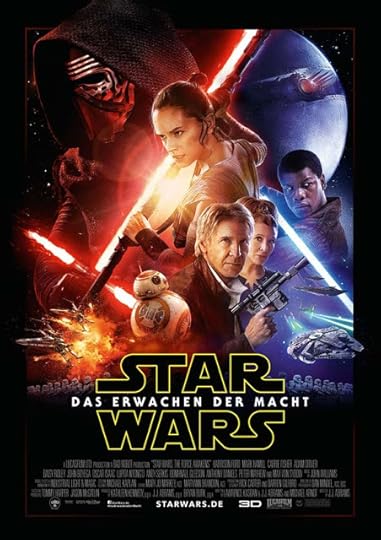
Watched it again (this time on Allie's new Blu-ray) and enjoyed it again, but like I said before, while "The Force Awakens" is certainly well-made and entertaining, it's never really surprising and doesn't provoke any gasps like the other "Star Wars" movies did. (Though, admittedly, the gasps that came during the prequels were about how godawful they were.) I really like the new characters, especially Oscar Isaac's Poe Dameron, but I'm more excited about what they might do in future films than anything specific they do here. One more thing: What the hell is up with the scene where Han and Chewie chase those CGI monstrosities around their ship? It feels like it came out of a completely different movie, and frankly, I wish it had stayed there.
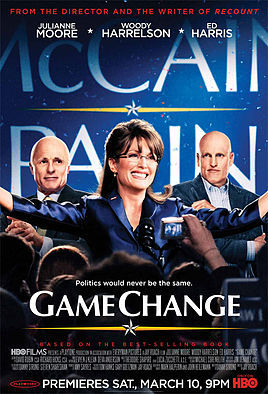
Watched this 2012 HBO movie for an episode of our Out of Theaters podcast. It's good, but not great (in the vein of most HBO movies) with the highlight being Julianne Moore's uncanny impersonation of political oddity Sarah Palin. Like I said in the write-up for that episode:
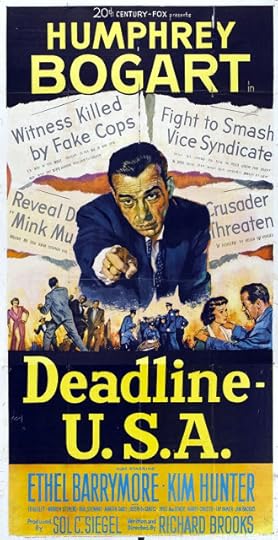
Now this, this is a movie. Having spent the greater part of my adult life in a newsroom, I've got a natural fascination with newspaper movies, especially those focusing on the good ol' days of shoe leather journalism, with crusty editors barking out orders and young, go-get-em reporters risking their lives for tomorrow's front page scoop. Well, they don't get much better than this 1952 potboiler, a Humphrey Bogart should-be-classic about a great old newspaper trying to get the dirt on a local crime boss before it's driven out of business. The combination of an old-fashioned story with the surprisingly timely angle of a newspaper's dying days makes for a winning, fast-paced drama, and the script cleverly manages to involve all the newsroom departments -- sports, editorial cartoons, society columns, photogs, etc -- in the plot to put away the powerful mobster. Bogart makes a great boss, and it's a shame he didn't spend more time in a (celluloid) newsroom, because he feels right at home. The highlight for actual (or former) newsroom folks will probably be the wake the staff throws in a bar when they learn the paper is being sold. It's almost shockingly prescient, with Bogart and his fellow bitter (and drunk) journalists complaining about how newspapers have sold out with gimmicks and happy news to attract new readers -- in other words, exactly what's happening today, only to a degree Bogart could never imagine. It's a great, corny old movie, and it's great because it's corny, and not despite it. The ending, with Bogart yelling "It's the press, baby, and there's nothing you can do to stop it!" is one of my all-time favorites.
By the way, after years of being mostly missing from home video, "Deadline USA" has finally been released on a crisp new Blu-ray, complete with commentary from movie export Eddie Mueller. Definitely worth picking up.

Watched it again (this time on Allie's new Blu-ray) and enjoyed it again, but like I said before, while "The Force Awakens" is certainly well-made and entertaining, it's never really surprising and doesn't provoke any gasps like the other "Star Wars" movies did. (Though, admittedly, the gasps that came during the prequels were about how godawful they were.) I really like the new characters, especially Oscar Isaac's Poe Dameron, but I'm more excited about what they might do in future films than anything specific they do here. One more thing: What the hell is up with the scene where Han and Chewie chase those CGI monstrosities around their ship? It feels like it came out of a completely different movie, and frankly, I wish it had stayed there.

Watched this 2012 HBO movie for an episode of our Out of Theaters podcast. It's good, but not great (in the vein of most HBO movies) with the highlight being Julianne Moore's uncanny impersonation of political oddity Sarah Palin. Like I said in the write-up for that episode:
“Game Change,” to be honest, isn’t a great political movie. It lacks the subtlety of “The Candidate,” the wit of “The Ides of March” or even the go-for-broke nuttiness of “Primary Colors.” HBO insists it’s not TV, but this is, at it’s heart, your basic TV movie, with a simplified storyline, clearly defined heroes and villains (it’s pretty obvious that Schmidt and Wallace were the real-life sources for the authors — they come off as unappreciated geniuses. Director Jay Roach (who also brought us the “Austin Powers” and “Meet the Fockers” movies) doesn’t bring much flair to this one, though it certainly looks professional enough, if about as dull as a CNN segment (which, given the subject matter, just might be the point).Read the whole thing here. Or, better yet, listen to Billy Kulpa and I talk about "Game Change" on the actual podcast episode at the same link.

Now this, this is a movie. Having spent the greater part of my adult life in a newsroom, I've got a natural fascination with newspaper movies, especially those focusing on the good ol' days of shoe leather journalism, with crusty editors barking out orders and young, go-get-em reporters risking their lives for tomorrow's front page scoop. Well, they don't get much better than this 1952 potboiler, a Humphrey Bogart should-be-classic about a great old newspaper trying to get the dirt on a local crime boss before it's driven out of business. The combination of an old-fashioned story with the surprisingly timely angle of a newspaper's dying days makes for a winning, fast-paced drama, and the script cleverly manages to involve all the newsroom departments -- sports, editorial cartoons, society columns, photogs, etc -- in the plot to put away the powerful mobster. Bogart makes a great boss, and it's a shame he didn't spend more time in a (celluloid) newsroom, because he feels right at home. The highlight for actual (or former) newsroom folks will probably be the wake the staff throws in a bar when they learn the paper is being sold. It's almost shockingly prescient, with Bogart and his fellow bitter (and drunk) journalists complaining about how newspapers have sold out with gimmicks and happy news to attract new readers -- in other words, exactly what's happening today, only to a degree Bogart could never imagine. It's a great, corny old movie, and it's great because it's corny, and not despite it. The ending, with Bogart yelling "It's the press, baby, and there's nothing you can do to stop it!" is one of my all-time favorites.
By the way, after years of being mostly missing from home video, "Deadline USA" has finally been released on a crisp new Blu-ray, complete with commentary from movie export Eddie Mueller. Definitely worth picking up.
Published on August 21, 2016 14:07
August 14, 2016
Movies I Watched in July, Part 1
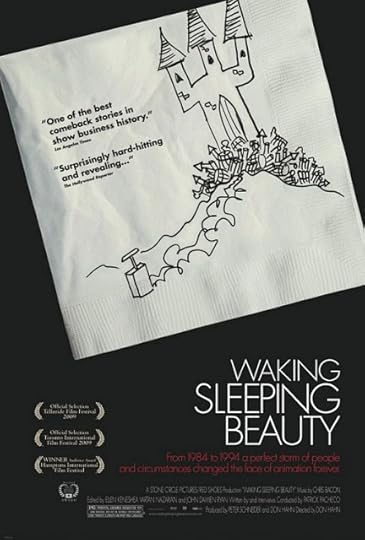
Interesting (if a bit superficial) documentary about the rebirth of Disney animation in the mid 1980s, which led to the studio reclaiming its pop culture crown and filling its coffers with profits (and merchandising revenue) from movies like "The Little Mermaid," "The Lion King" and "Aladdin." It's not exactly hard-hitting, but it is fascinating for movie fans (like yours truly) to see a studio that was floundering in the decades after Walt's death become a powerhouse thanks, in part, to the modern studio management methods of guys like Michael Eisner and Jeffrey Katzenberg. Lots of great behind-the-scenes footage, of course, plus glimpses of guys like Tim Burton at the very, very beginning of their careers. In perhaps my favorite moment, the caption on the screen reveals that the offscreen guy holding the camcorder is none other than Pixar leader John Lasseter, years before a computer animated feature film was even a concept.
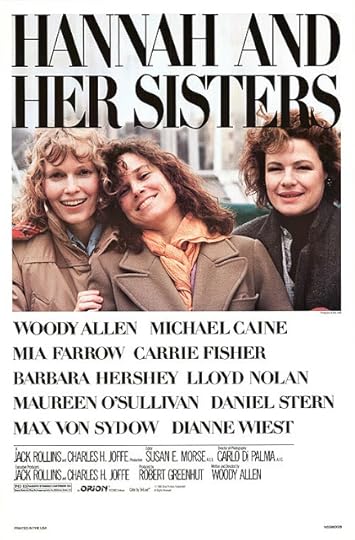
This has to rank among Woody's very, very best, right? I mean, right up there with "Annie Hall"? It's a complex, complicated comedy-drama with a large cast of characters that manages to cover what seems like several years in its relatively brief (an hour and 43 minutes) running time. The stories, involving the titular Hannah (Mia Farrow) and her two sisters (Dianne Wiest and Barbara Hershey) branch out to include husbands, friends, lovers, parents, co-workers and other folks, creating a rich collection of tales that also acts as one of Woody's best portraits of his beloved Manhattan. Michael Caine, as Farrow's husband and Hershey's lover, gives what might be his career-best performance, and we also get strong work from Carrie Fisher, Sam Waterston, old Woody pal Tony Roberts, a pre-Marge Simpson Julie Kavner, Max Von Sydow and, in tiny (but funny) roles, pre-fame Julia Louis Dreyfus, Louis Black and John Turturro. The only fault I can find is the scene where Weist and Woody go to a punk rock club, proving (as if there were any doubt) that Woody has never been to a punk rock club. And, in a comic book-related note, the plot involving Hershey, Von Sydow and Caine in "Hannah and Her Sisters" is pretty much identical to the plot involving Silk Spectre, Doctor Manhattan and Night Owl in "Watchmen." Seriously. It is. Watch it.
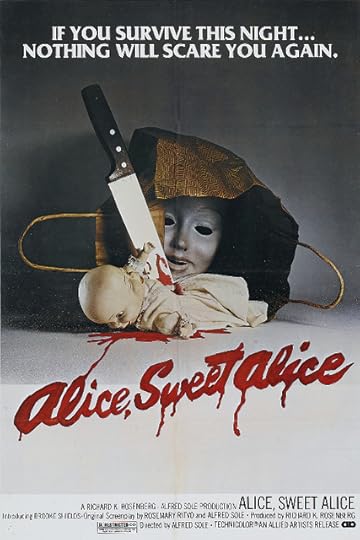
Great, creepy little horror movie that I finally caught, thanks to a late night showing on TCM. Though it's mostly known as Brooke Shields film debut, she dies in the opening minutes (er, spoilers) and the movie actually revolves around her sister Alice (Paula Sheppard, very good), who (a) might be crazy and (b) might have killed little Brooke "Alice Sweet Alice" delves deeply and disturbingly into the mysteries and madness of the Catholic Church, and it's full of strange, sometimes shocking moments that raise it several notches above the level of your average horror movie. (The scenes involving her obese, perverted neighbor are more than worth the price of admission.) If you're seeking something different in a horror film, by all means, check this one out. It's damned good.
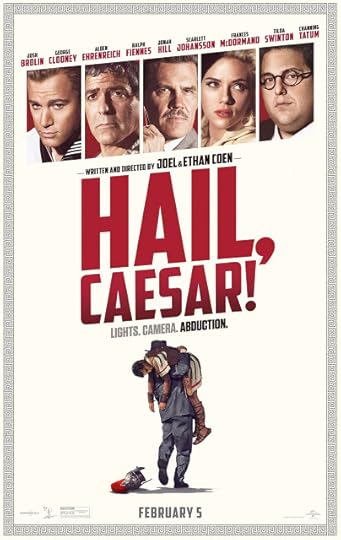
The latest from the Coens is a love letter to Hollywood, set on a single day at the (fictional) Capitol Pictures. Fixer Eddie Mannix (Josh Brolin playing a fictional character, though there was a real Eddie Mannix) has a lot on his plate, from the usual star babysitting and rumor squashing to the current big problem -- Capitol's star, Baird Whitlock (George Clooney) has vanished in the middle of filming the studio's biblical epic, "Hail, Caesar!" There's a lot going on in this movie, and the Coens have packed the cast with big names and fun actors -- besides Brolin and Clooney, we also get Scarlett Johansson, Frances McDormand, Channing Tatum, Clancy Brown, Jonah Hill, Tilda Swinton (as twins!), Ralph Fiennes and, narrating the whole thing, Michael Gambon. Making a big impression is Alden Ehrenreich, playing nice guy cowboy star Hobie Doyle, whom the studio is trying to shoehorn in to a swanky romance (with Fiennes in the director's chair, trying to teach poor Hobie to say the line "Would that it were so simple" and failing over and over (and over) again. (Ehrenreich is slated to play the young Han Solo in one of the upcoming "Star Wars" movies.) "Hail, Caesar!" is a lot of fun, and it's definitely never boring, but in the end, I'm not quite sure what it add up to. I'm a huge fan of movie history (which I'm guessing you suspected, seeing as you're reading this blog), so I liked it a lot, but I wonder how someone not quite so steeped in Tinseltown lore would react. Still, it's definitely better than 99 percent of what modern Hollywood cranks out, that's for sure. And the parts involving the actor playing Jesus (is he an extra or a day player?) are deadpan hilarious.
Up next: The rebirth of "Star Wars," the death of newspapers and an election slightly less crazy than the current one.
Published on August 14, 2016 10:18
August 5, 2016
Eighteen movies from 1999 that were better than the Best Picture winner, 'American Beauty'
On our Out of Theaters podcast, I argued with my co-host Billy Kulpa that Oscar winner "American Beauty" not only was not the best movie of 1999, it wasn't even close. So, to pointlessly bolster this argument (that no one else is having), here are 18 movies that were much better than "American Beauty" that did not, in fact, win the Best Picture Oscar.
By the way, if this proves nothing else -- and it probably doesn't -- it proves what a great year for movies 1999 was. Pretty impressive lineup, eh?
* indicates a nominee for Best Picture
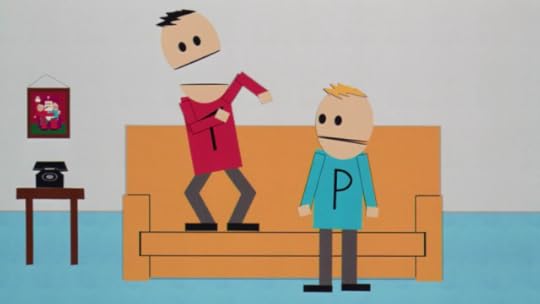
"South Park: Bigger, Longer and Uncut"
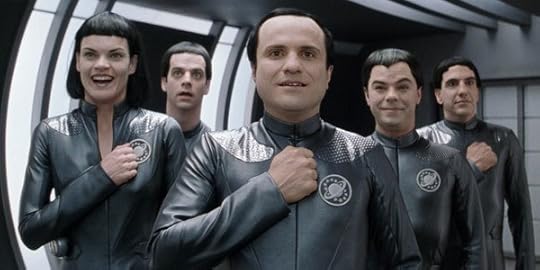
"Galaxy Quest"
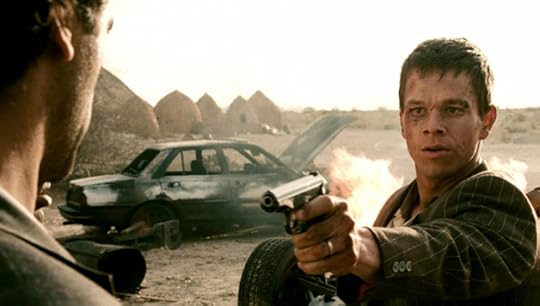
"Three Kings"
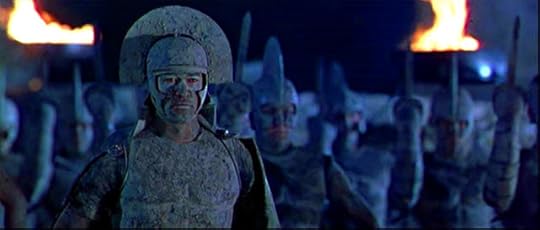
"Titus"
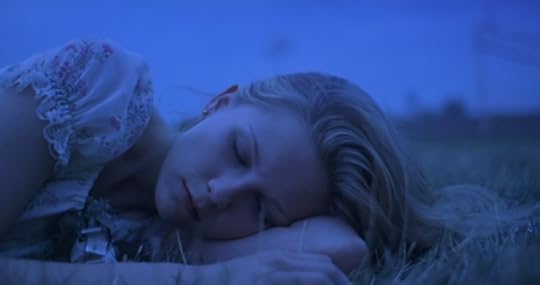
"The Virgin Suicides"
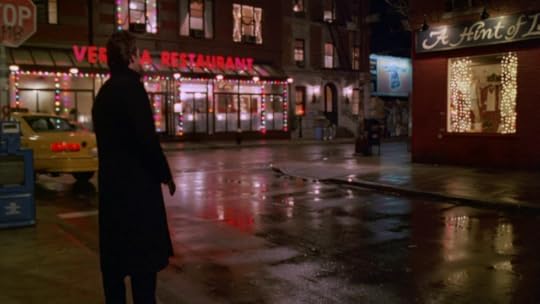
"Eyes Wide Shut"
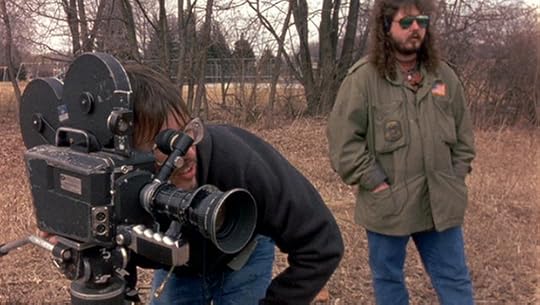
"American Movie"
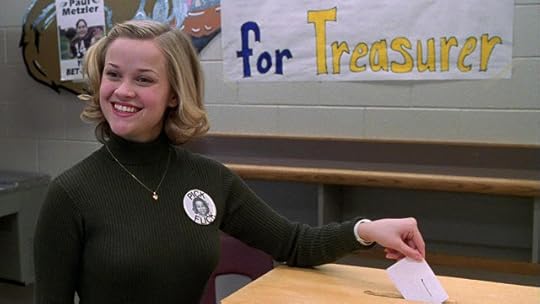
"Election"
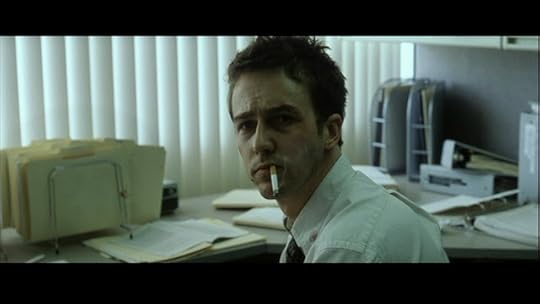
"Fight Club"
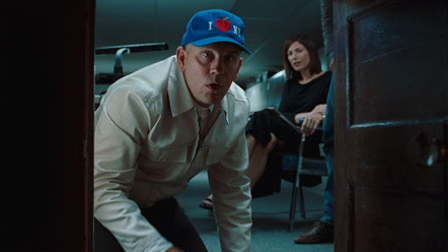
"Being John Malkovich"
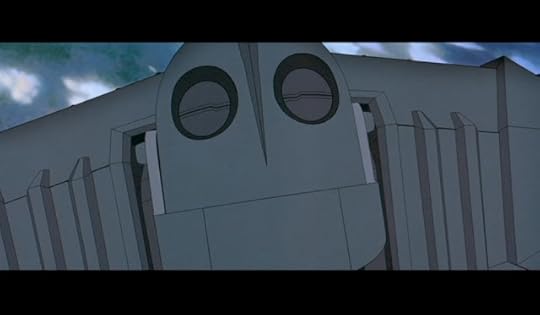
"Iron Giant"
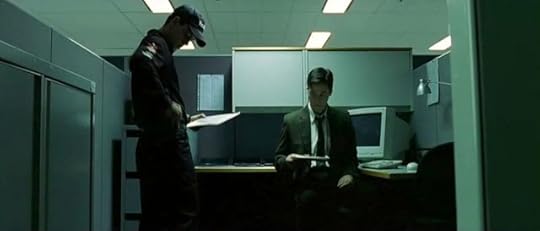
"The Matrix"
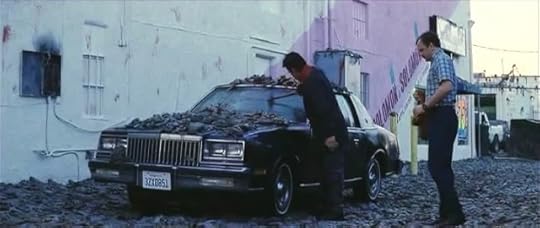
"Magnolia"
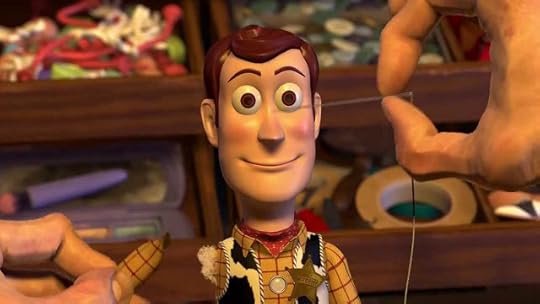
"Toy Story 2"
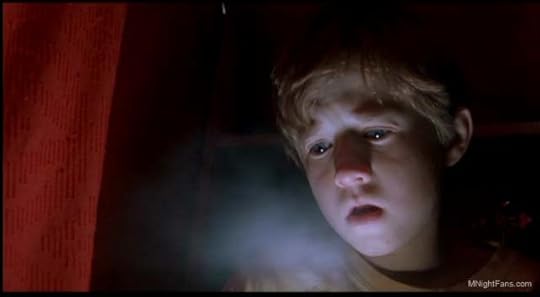
"The Sixth Sense"*
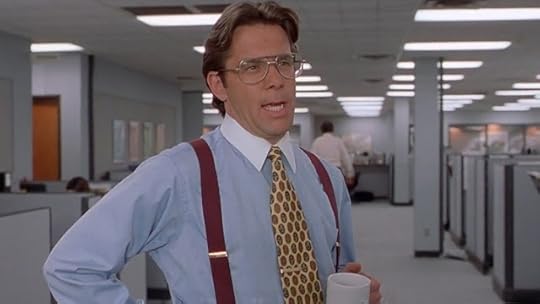
"Office Space"
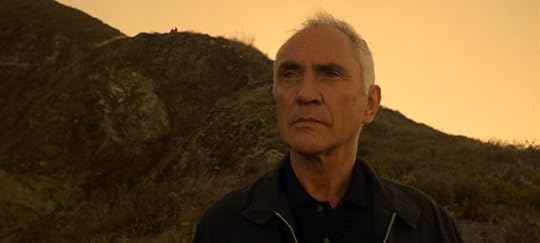
"The Limey"
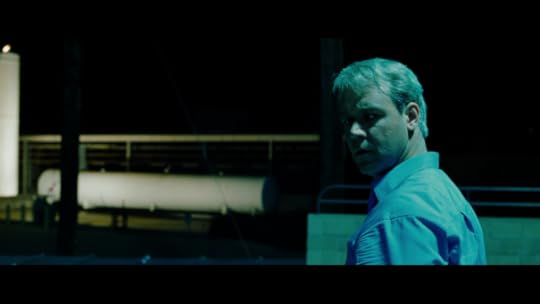
"The Insider" *
By the way, if this proves nothing else -- and it probably doesn't -- it proves what a great year for movies 1999 was. Pretty impressive lineup, eh?
* indicates a nominee for Best Picture

"South Park: Bigger, Longer and Uncut"

"Galaxy Quest"

"Three Kings"

"Titus"

"The Virgin Suicides"

"Eyes Wide Shut"

"American Movie"

"Election"

"Fight Club"

"Being John Malkovich"

"Iron Giant"

"The Matrix"

"Magnolia"

"Toy Story 2"

"The Sixth Sense"*

"Office Space"

"The Limey"

"The Insider" *
Published on August 05, 2016 20:26
July 29, 2016
Read this graphic design book: 'Art Chantry Speaks'!
I write the occasional comic book, and I talk about the occasional movie, but what I do for a living is marketing, with a focus on graphic design. Before I studied journalism in college, I studied design, and I remain fascinated by it to this day. And, given my undying interest in the dark, forgotten corners of pop culture (something you must have noticed if you’ve read this blog for more than five minutes) I prefer looking at the offbeat designs and designers. Anyone can read another diatribe about Paul Rand or Pushpin Studios, but gimme the old stuff (Norman Bel Geddes!) the weird stuff (Punk Magazine!) or the weird, old stuff (the graphic design of totalitarian states!) I’ll cover those books in upcoming posts (I promise), but in the meantime, let me point you in the direction of the best design book I’ve read in a while, “Art Chantry Speaks: A Heretic’s History of 20th Century Design” by (who else?) Art Chantry.
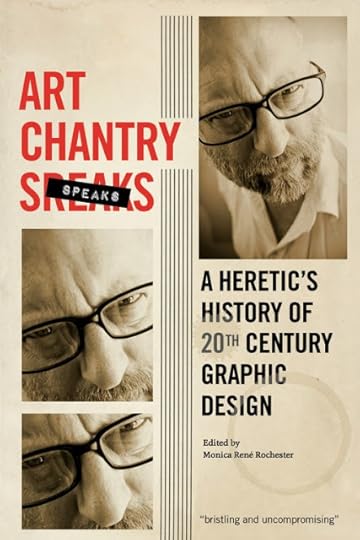
Chantry is a graphic designer based in the northwest often credited with originating the somewhat retro, consistently clever, usually homemade look of the grunge rock era. In his designs for posters, albums, magazine and ads, he delved into pop culture’s past, using imagery from old monster movies, supply catalogs and pin-up magazines to deliver designs that, if not wholly unique, were wholly American. There’s a hefty monotype of his work, “SomePeople Can’t Surf: The Graphic Design of Art Chantry,” that I highly recommend.
But its “Art Chantry Speaks” that, though smaller, is more intriguing. In dozens of essays, Chantry examines the graphic design that we see every day, that we grew up with, that shaped our vision of the world in countless weird little ways. He examines who really created the once-ubiquitous smiley face icon; proves that the psychedelic designs we’re most familiar with come courtesy of Hallmark, not Peter Max; and gives props to mid-century satire with a history of that Alfred E. Neuman face and a loving tribute to Harvey Kurtzman’s legendary magazine, Help. All great articles, and all amply illustrated with images from Chantry’s personal files. But that’s not the best stuff in “Art Chantry Speaks.” Where the book really soars, and where you can really feel Chantry’s love for his subject matter, are the sections where he dives deep, reminding you of images you barely remember seeing, then revealing how they came to be in the first place.
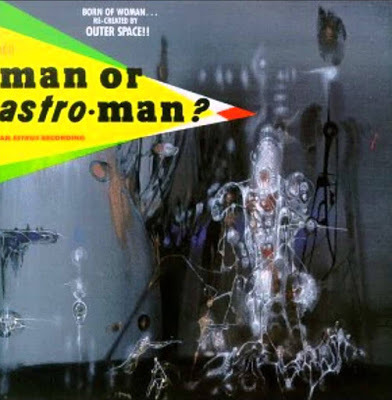
There’s a great chapter on Richard W. Powers, an artist who created some truly mind-bending covers for science fiction novels in the ‘50s and ‘60s. In a twist ending, Chantry tracked him down in the ‘90s, after he’d retired from the cover biz for a lucrative fine art career, and hired him to illustrate the cover for the debut album of the sci-fi-inspired band, Man … or Astroman?
In a more lowbrow vein, Chantry takes a long look at various forms of cheap, disposable religious propaganda – banners, flyers and inspiration novels – and tries to uncover inspiration behind these decidedly unsophisticated designs. In a surprising move, he points the finger at legendary artist Henri Matissa (and make a solid case for him, at least as far as the banners go). Then, in a second surprising move, he pieces together who the artists of those forgotten novels were (you know, the ones that have titles like “The Lonely Now” and introductions from guys like Art Linkletter). It’s the sort of cultural detective work that almost no one is willing to do -- but that almost always yields interesting results. That certainly the case here.
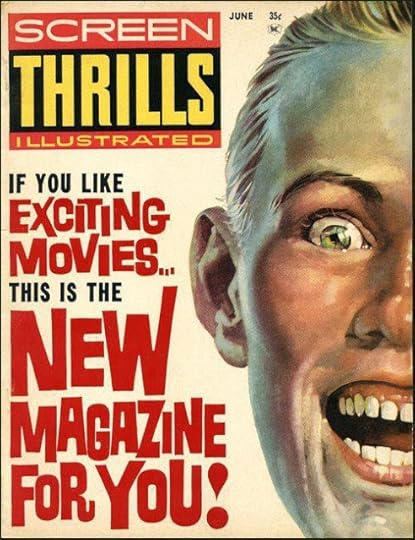
And then there’s what might be my favorite chapter in the whole book, “Harry Chester, King of Monster Type,” which examines the work of the improbably named Mr. Chester. As Chantry says “Harry Chester was the designer/art director who became the right hand for this weirdo crowd. Whenever there was a magazine or a page or book to design, he was there pasting it up.” He worked with guys like Jim Warren, Bill Gaines and the aforementioned Harvey Kurtzman, and he worked on magazines like Mad, Help Eerie, Creepy, Blazing Combat and Famous Monsters of Filmland. All classics of pop culture, and Chester did important work on them (he helped guide the transition of Mad from comic book to magazine, for instance). But what Chantry really likes about Chester – and what you will too, after reading this chapter -- is the lettering he did for Famous Monsters and other over-the-top publications. Beautifully designed, hilariously in-your-face and just plain fun, the headlines and type styles Chester created (by hand, of course) perfectly mirrored the playful articles and photos they accompanied. And, though the youthful audience probably didn’t notice it, those headlines were stunning examples of design, with powerful contrasts of line, shape and black-white. It’s great stuff, and though I’ve seen it before, I never would’ve appreciated it without Chantry’s enthusiastic prose to guide my way.
“Art Chantry Speaks” is full of that sort of article, well-written (and well-illustrated) reminders of how much fun design can be. Like I said, I was a design major in college for a couple of years, and there’s nothing that can drain the fun out of graphic design like listening to some burnt-out professors drone on about the same three names you’ve heard a million times. Chantry’s book, which mentions those names only in passing (and usually in sarcasm – there’s a chapter titled “Saint Paul”) should be on the syllabus of every design prof in the country. It would wake up the students, invigorate the classwork and, in eventually, make the world a more interesting-looking place.
“Art Chantry Speaks,” by the way, comes to us courtesy of the fine folks at Feral House, one of the most interesting publishers on the planet. I don’t own every book they’ve published, but I do seem to own most of them. Check them out at feralhouse.com

Chantry is a graphic designer based in the northwest often credited with originating the somewhat retro, consistently clever, usually homemade look of the grunge rock era. In his designs for posters, albums, magazine and ads, he delved into pop culture’s past, using imagery from old monster movies, supply catalogs and pin-up magazines to deliver designs that, if not wholly unique, were wholly American. There’s a hefty monotype of his work, “SomePeople Can’t Surf: The Graphic Design of Art Chantry,” that I highly recommend.
But its “Art Chantry Speaks” that, though smaller, is more intriguing. In dozens of essays, Chantry examines the graphic design that we see every day, that we grew up with, that shaped our vision of the world in countless weird little ways. He examines who really created the once-ubiquitous smiley face icon; proves that the psychedelic designs we’re most familiar with come courtesy of Hallmark, not Peter Max; and gives props to mid-century satire with a history of that Alfred E. Neuman face and a loving tribute to Harvey Kurtzman’s legendary magazine, Help. All great articles, and all amply illustrated with images from Chantry’s personal files. But that’s not the best stuff in “Art Chantry Speaks.” Where the book really soars, and where you can really feel Chantry’s love for his subject matter, are the sections where he dives deep, reminding you of images you barely remember seeing, then revealing how they came to be in the first place.

There’s a great chapter on Richard W. Powers, an artist who created some truly mind-bending covers for science fiction novels in the ‘50s and ‘60s. In a twist ending, Chantry tracked him down in the ‘90s, after he’d retired from the cover biz for a lucrative fine art career, and hired him to illustrate the cover for the debut album of the sci-fi-inspired band, Man … or Astroman?
In a more lowbrow vein, Chantry takes a long look at various forms of cheap, disposable religious propaganda – banners, flyers and inspiration novels – and tries to uncover inspiration behind these decidedly unsophisticated designs. In a surprising move, he points the finger at legendary artist Henri Matissa (and make a solid case for him, at least as far as the banners go). Then, in a second surprising move, he pieces together who the artists of those forgotten novels were (you know, the ones that have titles like “The Lonely Now” and introductions from guys like Art Linkletter). It’s the sort of cultural detective work that almost no one is willing to do -- but that almost always yields interesting results. That certainly the case here.

And then there’s what might be my favorite chapter in the whole book, “Harry Chester, King of Monster Type,” which examines the work of the improbably named Mr. Chester. As Chantry says “Harry Chester was the designer/art director who became the right hand for this weirdo crowd. Whenever there was a magazine or a page or book to design, he was there pasting it up.” He worked with guys like Jim Warren, Bill Gaines and the aforementioned Harvey Kurtzman, and he worked on magazines like Mad, Help Eerie, Creepy, Blazing Combat and Famous Monsters of Filmland. All classics of pop culture, and Chester did important work on them (he helped guide the transition of Mad from comic book to magazine, for instance). But what Chantry really likes about Chester – and what you will too, after reading this chapter -- is the lettering he did for Famous Monsters and other over-the-top publications. Beautifully designed, hilariously in-your-face and just plain fun, the headlines and type styles Chester created (by hand, of course) perfectly mirrored the playful articles and photos they accompanied. And, though the youthful audience probably didn’t notice it, those headlines were stunning examples of design, with powerful contrasts of line, shape and black-white. It’s great stuff, and though I’ve seen it before, I never would’ve appreciated it without Chantry’s enthusiastic prose to guide my way.
“Art Chantry Speaks” is full of that sort of article, well-written (and well-illustrated) reminders of how much fun design can be. Like I said, I was a design major in college for a couple of years, and there’s nothing that can drain the fun out of graphic design like listening to some burnt-out professors drone on about the same three names you’ve heard a million times. Chantry’s book, which mentions those names only in passing (and usually in sarcasm – there’s a chapter titled “Saint Paul”) should be on the syllabus of every design prof in the country. It would wake up the students, invigorate the classwork and, in eventually, make the world a more interesting-looking place.
“Art Chantry Speaks,” by the way, comes to us courtesy of the fine folks at Feral House, one of the most interesting publishers on the planet. I don’t own every book they’ve published, but I do seem to own most of them. Check them out at feralhouse.com
Published on July 29, 2016 20:01
July 9, 2016
Movies I Watched in June, Part 2
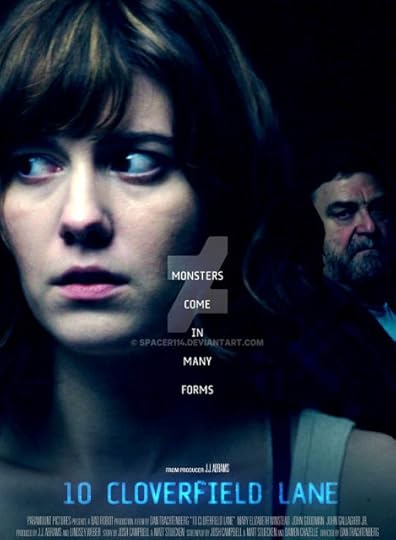
I never caught the original 2008 “Cloverfield” in the theater, meaning I was never subjected to its notorious stomach-churning handicam cinematography, but I did see it on DVD and though I wasn’t as blown away as some people, I thought it was a solid, modern twist on your standard Godzilla premise. So, though I wasn’t jonesing for a sequel, I was very intrigued by the excellent thriller for the seeming follow-up, this year’s “10 Cloverfield Lane.” Three people in some sort of shelter with something outside, and the always ominous Tommy James and the Shondells song “I Think We’re Alone Now” adding a genuine sense of menace. I’m happy to say, after seeing “10 Cloverfield Lane,” that the film delivers on its promise of a tense, tight, suspenseful thriller with a simple story, a solid cast and an admirable sense of restraint as far as revealing what the situation really is. I don’t want to spoil things, but here’s the basic setup: A young woman (Mary Elizabeth Winstead) drives off from her husband (leaving her wedding ring behind) and gets into a car accident. When she awakens, she’s in the nicely-appointed underground shelter of a somewhat intimidating guy (John Goodman) who also has a younger man (John Gallagher Jr.) down there with him. She tries desperately to escape, but soon learns that what’s outside might be even more of a threat than what’s inside. And that’s all I’m going to tell you. At its best, “10 Cloverfield Lane” is a locked-room mystery, with Winstead’s character trying to learn exactly what the situation is and who – if anyone – she can trust. It all builds to some fairly explosive revelations (in every sense of the word) and if the ending abandons the intimate tension of acts one and two, it delivers some impressive visuals and a nicely played character resolution. Not a game changer by any means, but a smart, satisfying thriller. Plus, Goodman returns to the sort of genuinely unnerving menace he hasn’t shown since way back in 1991’s “Barton Fink.”
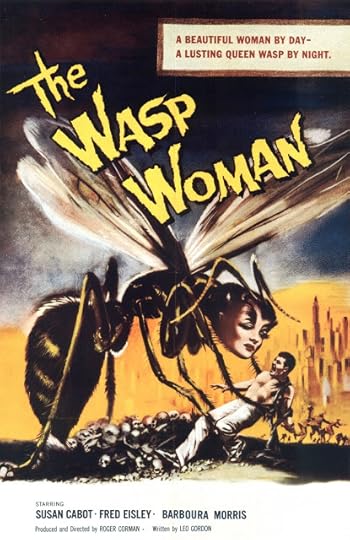
I’ve seen this 1959 Roger Corman bargain-basement chiller before, but I couldn’t resist watching it again when it showed up randomly on TCM. For one thing, it’s just over an hour long, so it’s not like I’m wasting my whole life rewatching a (frankly) mediocre movie when I could be studying Shakespeare of curing cancer. But more than that, there’s something about the almost homemade quality of “The Wasp Woman” that I find oddly appealing. In a previous post, I compared it to a no-budget version of “Mad Men” (filmed in the actual “Mad Men” era), but it’s almost more like a staged drama, with limited sets, an (obviously) amateur cast and almost no special effects – despite the crazy image on the poster (which has absolutely nothing to do with anything that happens in the movie itself). As I get older and see more and more movies, I find myself gravitating to the ones where I can see the fingerprints left by the people who made them, the ones that don’t just showcase a director’s style but almost have a homemade quality about them. (It’s one of the reasons I’ve come to love Ed Wood that has nothing to do with him being a quote-unquote “bad”director.) “The Wasp Woman” isn’t that great, but it also isn’t that slick – and sometimes, that makes all the difference.
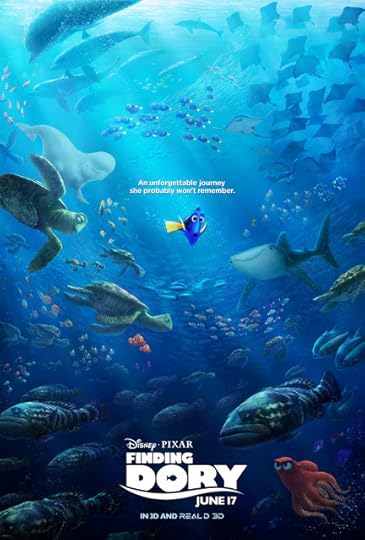
When she was a toddler, Allie went through a period when she was obsessed with “Finding Nemo,” watching it every chance she got. Which means I wound up watching “Finding Nemo” every chance she got, too, and instead of coming to hate it, I came to admire it. It’s an epic story of parenthood with dozens of wonderful moments sprinkled throughout, all brought to life with visuals that, for 2003, were state of the art (and still look pretty impressive 13 years later). But, being that Ellen Degeneres’ Dory was my least favorite part of “Nemo,” I wasn’t exactly waiting breathlessly at the theater to see this sequel. Still, the weather was hot, the cinema was cool and we had nothing to do that Sunday, so Amy, Allie and I ventured out to see “Finding Dory.” And while it failed to hit the glorious heights of its predecessor, I have to admit, even with the Ellen-centric plot, it wasn’t half bad. What I really admired about the movie was that, in its typically subtle Pixar way, it seemed to be aimed at families with special-needs children, addressing the tension between a parent’s desire to protect their child with their desire to let them make their own way in the world. (Sort of like what Marlin dealt with in “Finding Nemo,” but with a slightly different focus.) Going beyond Dory’s lack of short-term memory, it becomes apparent that most of the new characters have some sort of damage they learn to deal with: an octopus (Ed O’Neill) has PTSD, a beluga whale (Ty Burrell) can’t echolocate and a whale shark (Kaitlin Olson – yes, Sweet Dee from “Always Sunny!”) can’t see very well. Naturally, all these misfits team up in the end to help Dory find her parents, and though the end is really never in doubt, I have to admit, when I saw what Dory’s parents had been doing in the years since she went missing, it hit me right in the spot a good Pixar film always manages to reach. Not on the level of, say, a “Toy Story 3” or “Inside Out,” but surprisingly effective nonetheless.
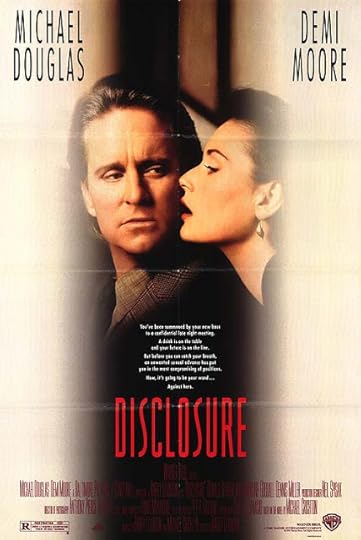
Maybe it’s because I remember the era so well, but I’ve got a real fascination for movies about computers from the early to mid 1990s. The technology, though only a few decades old, seems dowright archaic, and what the characters consider groundbreaking is trivial to our modern eyes. Which brings me to this 1994 drama that is not only a hilariously dated look at high-tech, but also a hilariously dated look at sexual harassment. And this was no low-budget cheesefest, either. Based on a best-seller by Michael Crichton (the year after “Jurassic Park” hit theaters), it boasts direction by Barry Levinson, a score by Ennio Morricone and a cast that includes Michael Douglas, Demi Moore, Donald Sutherland, Dylan Baker and (ahem) Dennis Miller (who starred in the tech-thriller “The Net” a year later). The big twist is that the sexual harasser in this case is Moore, who tricks Douglas into almost having sex late at night, then accuses him of harassment the next morning. It was all a very hot-button issue in 1994, but it looks silly 22 years later, with Douglas learning the lesson that maybe he shouldn’t pat his secretary on the ass every chance he gets. More than the sexual harassment plot, though, what stands out is the vision of technology we had back in those very first days of the internet. Douglas, a highly placed executive at a tech company, literally gets about five emails a day, and the arrival of each one is heralded like the delivery of a telegram from a long-lost relative. Even better, the “revolutionary” invention at the center of a film is a ridiculous virtual reality program that requires the user to put on a helmet and walk on a treadmill just to access some normal, everyday computer files. You know, the kind you could just click on even back in the prehistoric era of 1994. The CGI shots of a wireframe Michael Douglas trying to evade a virtual Demi Moore (complete with Moore’s head!) as an avatar the IT guy in an angel costume (!) offers advice is one of the great, surreal images in 1990s cinema. No, make that all cinema.
Published on July 09, 2016 11:42
July 7, 2016
Movies I Watched in June, Part 1
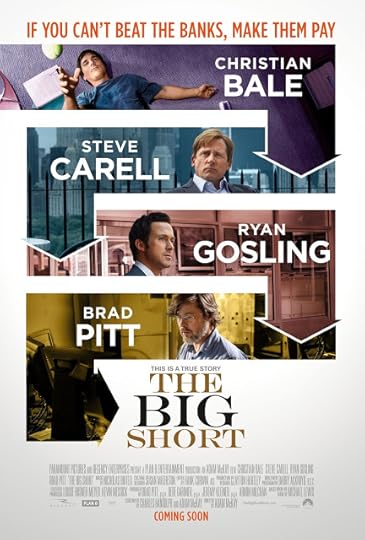
Took me a while to finally see it, but I really enjoyed this tragicomic look at the great financial collapse of 2008. Some critics took it to task for combining some pretty serious drama (specifically, the scenes with Christian Bale’s financial guru and Steve Carell’s broken money manager) with fourth-wall-breaking explanations involving Margot Robbie and Selena Gomez. Me? I liked them. I’m a big fan of a movie that finds a different way to tell its story, and as someone who hasn’t read the Michael Lewis book this movie is based on, I was grateful for the way writer/director Adam McKay took my hand and led me through some of the trickier parts. It never disrupted the flow for me, and the performances (specifically Carell and Bale, though really everyone was good) constantly reminded you of the human beings at the center of this global mess. I played catch-up with a lot of Oscar-contenders this spring, but “The Big Short” was my favorite. It’s one I can see returning to just to examine how McKay and company put the whole thing together. By the way, according to Lewis, the studio only allowed McKay to make this movie if he also agreed to make a sequel to “Anchorman.” I wasn’t much of a fan of that film, but if it made this one possible, it’s OK by me.
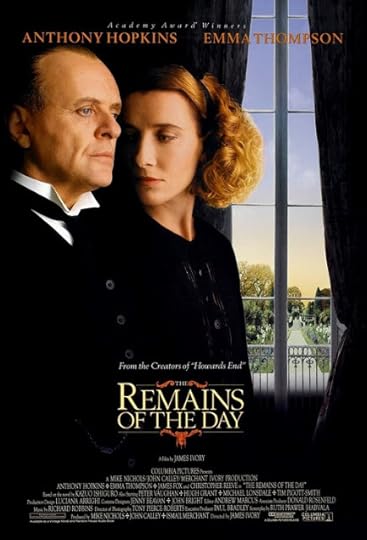
I hadn’t seen this Merchant-Ivory drama since catching it in the theater in 1993, and I’m happy to say it holds up beautifully – maybe even more beautifully than it did originally, in fact, when most of the reviews seemed obligated to compare Anthony Hopkins' portrayal of a remarkably tightly wound butler to his Oscar-winning performance as a slightly more free-spirited serial killer a few years earlier. “Remains” is arguably an even better showcase for Hopkins than “Silence of the Lambs,” in fact, forcing him to keep everything buried deep inside with only subtle pauses and slight movements to hint at the turmoil within. There’s an amazingly strong cast for him to play against, too, with Emma Thompson as the woman he might have loved, Christopher Reeve (a few years before his paralyzing accident) as an American who hires Hopkins in his autumn years and even Cersei Lannister herself, Lena Headey, as the young maid whose romantic ways stand in stark contrast to the controlled relationship between Hopkins and Thompson. “The Remains of the Day” is such a perfectly balanced piece of drama, with both deeply personal moments and undercurrents of global conflict, anti-Semitism and class struggle. It’s the sort of movie that would be very easy to screw-up with too much dramatic intrigue or a forced happy ending, but the folks at Merchant-Ivory handled it perfectly. One of the great forgotten films of the 1990s.
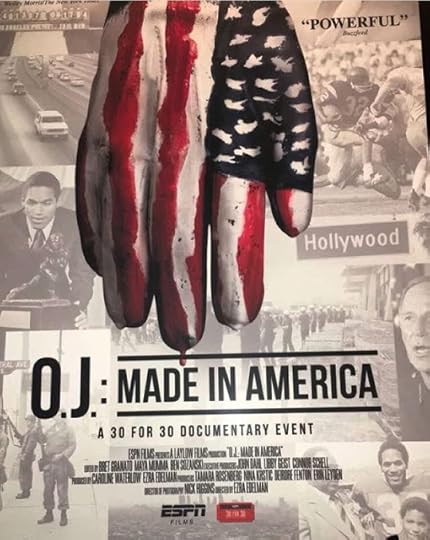
Maybe it’s not technically a “movie,” but “O.J.: Made in America” is definitely an epic, and what’s more, it’s one of the most compelling works I’ve seen in a long time. Director Ezra Edelman does more than just retell a fascinating story – he digs deep into both Simpson’s past and the world around him to make that story really mean something. By the time it’s over, you (a) are completely convinced he committed the murders and (b) can see why the jury found him not guilty. Doesn’t mean they were right, of course, but after watching hours of injustice toward black Americans (something O.J. was reluctant to identify as, ironically) and seeing in painful detail how the prosecution kept screwing up, the end result was virtually inevitable. And though the trial is the centerpiece of the five-part series (how could it not be?), there’s so much more in “O.J.: Made in America” that it’s almost impossible to absorb it in a single viewing. There’s the early revelation that Simpson’s father was gay – something that was kept a deep, deep secret in the 1960s. There’s fascinating footage that I can’t believe Edelman acquired of the post-trial celebration at O.J.’s house – I’d seen the helicopter video of the group entering his home many times, but who would imagine we’d see O.J. and his legal team popping the proverbial champagne after he beat a double murder rap? And, in the end, there’s seemingly endless footage of O.J. tumbling further and further down the low-rent celebrity ladder, his life filled with hangers-on, drugged-up escapades and increasingly sleazy female companions. You almost – almost – feel bad for the guy, especially when you think back to the truly glorious gridiron footage from earlier in the series. But then you remember the bodies of Nicole Brown and Ronald Goldman – and, to his credit, Edelman forces you to look at those crime scene photos and face what’s at the center of this story – and you realize, even though he’ll probably die in prison, O.J. Simpson got off easy.
Up next: The not-a-sequel to "Cloverfield," Pixar's latest and an inadvertantly hilarious look at technology and harassment circa 1994.
Published on July 07, 2016 19:57
June 23, 2016
My favorite movies of the 21st century? Funny you should ask...
Apparently, there's some poll going around among film critics from the BBC asking them to pick their top 10 films from the 21st century. We're not quite 16 and a half years into the century yet, so it seems like a pretty arbitrary time for the BBC to be compiling "best of" lists, but maybe they know something we don't. At any rate, since I'm no longer a paid movie critic and haven't received a ballot in the post just yet, I figured I'd take the initiative. Here are my 10 favorite movies of the 21st century, thus far. I'll admit to having missed some of the critically acclaimed films that made other lists, but hey, I can only love what I've seen, right? So, here are my picks, in alphabetical order. As always, your mileage may vary.
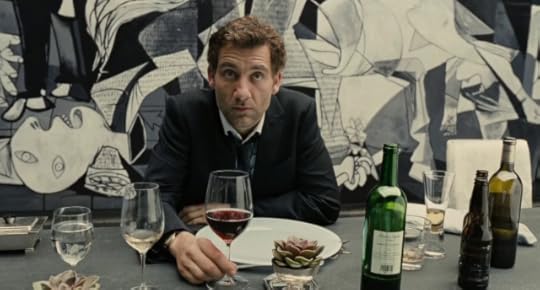 Children of Men
Children of Men
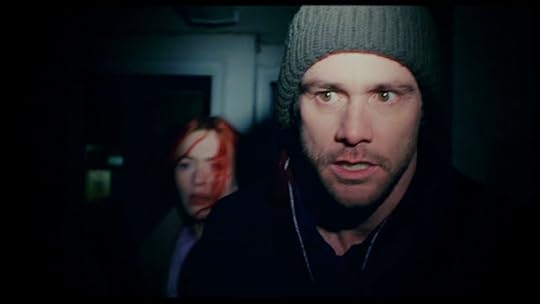 Eternal Sunshine of the Spotless Mind
Eternal Sunshine of the Spotless Mind
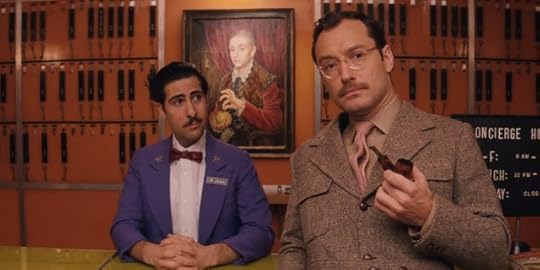 The Grand Budapest Hotel
The Grand Budapest Hotel
 In the Loop
In the Loop
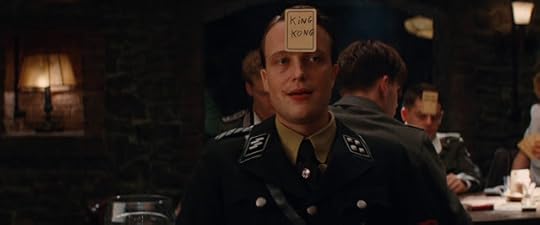 Inglorious Basterds
Inglorious Basterds
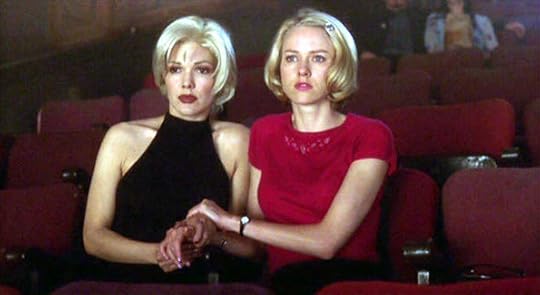 Mulholland Dr.
Mulholland Dr.
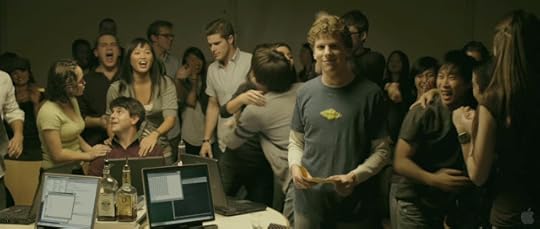 The Social Network
The Social Network
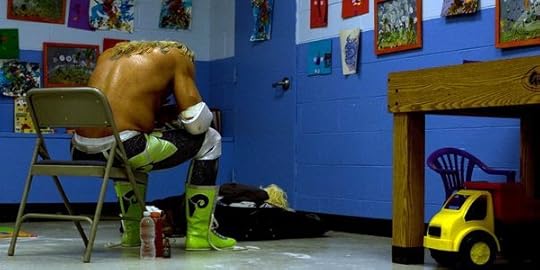 The Wrestler
The Wrestler
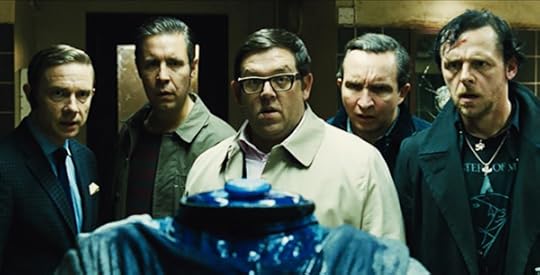 The World's End
The World's End
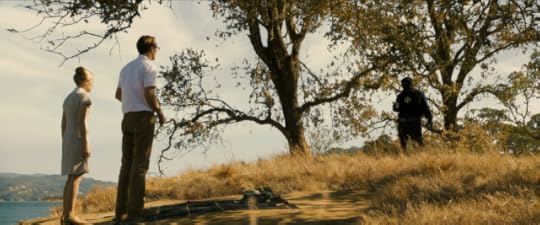 Zodiac
Zodiac
 Children of Men
Children of Men Eternal Sunshine of the Spotless Mind
Eternal Sunshine of the Spotless Mind The Grand Budapest Hotel
The Grand Budapest Hotel In the Loop
In the Loop Inglorious Basterds
Inglorious Basterds Mulholland Dr.
Mulholland Dr. The Social Network
The Social Network The Wrestler
The Wrestler The World's End
The World's End Zodiac
Zodiac
Published on June 23, 2016 07:43
June 9, 2016
Movies I Watched in May, Part 2
Here we go -- two old movies and three virtually brand-new ones (or as close to brand-new as you're going to get on this blog)...
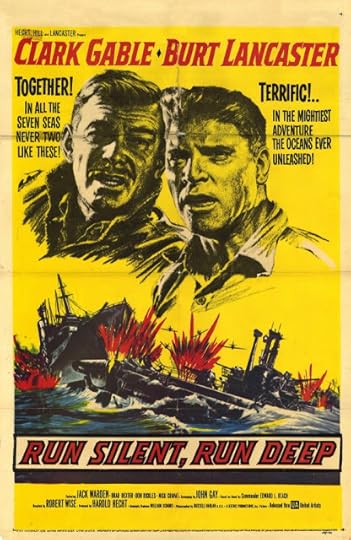
I suppose it’s no coincidence that submarine movies are manly affairs, being that (aside from “Operation Petticoat,” I guess) you don’t find many women on submarines – or at least you didn’t in the era that most submarines movies were made (or are set). This one practically drips with testosterone, most of it emitting from the two leads: Clark Gable (playing the old commander looking for one last shot at his Japanese nemesis) and Burt Lancaster (the young would-be commander whose opinion of Gable gradually shifts from "dangerous lunatic" to "slightly less dangerous genius.") It’s a lot of fun in a claustrophobic way, with all the hallmarks of the submarine genre perfectly in place: sweaty crews, tense scenes of silent running (hence the title) and, of course, the lovable new kid getting killed midway through. Plus, besides Gable and Lancaster, you also get the great Jack Warden (as Gable’s assistant) and Don Rickles (in his movie debut). It’s corny, sure, but it’s also beautifully made thanks – as the end credits tell us – to the inevitable cooperation of the United States Navy.
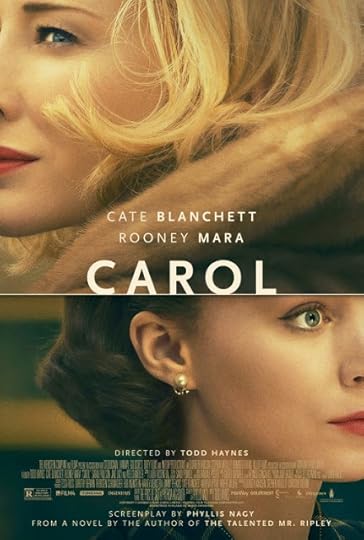
Now here’s the polar opposite of “Run Silent Run Deep,” a period romance involving two women. Set mostly in director Todd Hayne’s wonderful recreation of 1950s New York, it’s the story of a young shopgirl (Rooney Mara), a wealthy socialite (Cate Blanchett) and the love they shared, which was strictly verboten in 1958 America. Based on a novel by Patricia Highsmith, it’s a simple story, but one fueled by curiosity, fear and good old fashioned sexual tension. Being an old Ohio boy, I especially like the detour the movie took to the Buckeye State, but that’s just a pit stop on the way to inevitable trouble, of course, which comes in a form I admit I wasn’t expecting (and won’t spoil here). “Carol” isn’t a big, flashy movie, and despite the subject manner, it’s not even an overtly sexual one (except for one scene), but it’s a solid human drama exploring two lives that randomly intersect. In a perfect world, there would be a lot more movies like this.
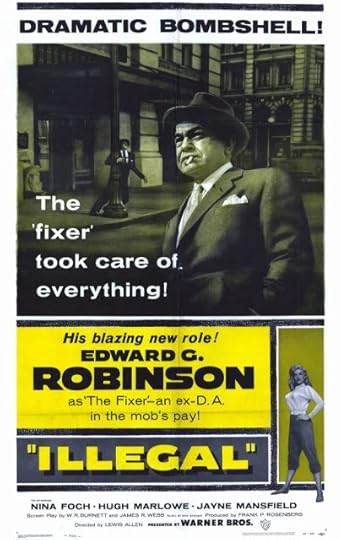
If forced at gunpoint to name my favorite actor, I’d have to go with Edward G. Robinson. He was good – and often great – in every movie he made, and what’s more, he was always enjoyable to watch. Even when the material wasn’t the best (and at several times in his career, it wasn’t), he always brought his A game. Which brings us to “Illegal,” a mostly forgotten 1955 movie that’s actually a remake of a mostly forgotten 1932 movie called “The Mouthpiece." Robinson plays a dedicated district attorney who gets an innocent man convicted of murder (it’s a pre-“Star Trek” DeForest Kelley!). When he realizes his mistake, he tries to prevent the execution, but it’s too late, and soon Edward G. is in the depths of a year-long drunken binge. When Robinson semi-sobers up, he decides he’d rather help a guilty man go free than imprison an innocent, so he becomes a high-paid mob lawyer. “Illegal” is the sort of mediocre movie Robinson was forced to make when he ran afoul of the commie hunters, but he’s solid (as always) and Albert Dekker is suitably oily as the sort of high-class gangster Hollywood used to rely on. Jayne Mansfield makes her non-extra debut as Dekker's moll, but there's not much memorable about her performance, unless you're counting its sheer awkwardness. Instead, keep an eye out for Dekker’s art collection – it was on loan from none other than Robinson himself, who happened to be one of Hollywood’s most respected art collectors.
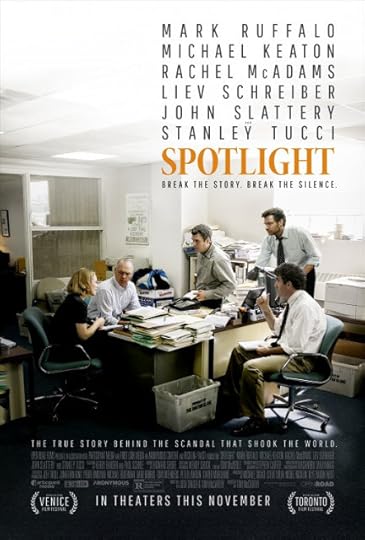
I wouldn’t place this quite at the level of the other two great investigative newspaper movies (“Zodiac” and, of course, “All the President’s Men”), but it’s very, very good, a methodical, refreshingly non-flashy look at how the Boston Globe broke the story that hundreds of Catholic priests had been raping children for decades. That subject, of course, is so appalling that it could easily make an entire movie about the subject unwatchable (albeit necessary), but co-writer/director Tom McCarthy keeps the focus on the reporters, and we learn about the horrific crimes of the church through the interviews and research – not (thankfully) through some sort of dramatic recreations. The cast is especially good, with Michael Keaton, John Slattery, Rachel McAdams, Mark Ruffalo and Brian d’Arcy James delivering nicely understated performances -- though Ruffalo, bless his heart, is a little less understated than the others. Special points for Liev Schreiber as the new editor who launches the whole project – it’s the best work I’ve seen from him. Be sure to stick around for the end credits, when you see just how horribly the Catholic Church has behaved all over the entire world. But don't worry, I'm sure it's all better now.
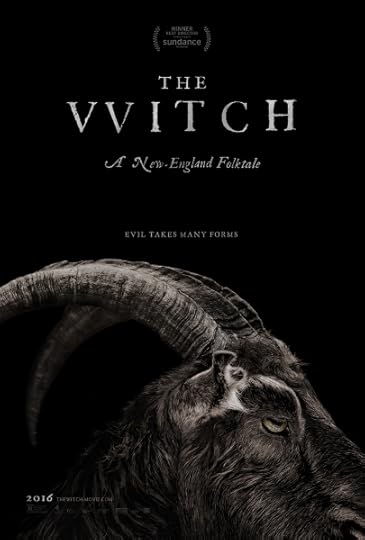
I love horror movies, but it’s rare that one of them actually scares me. This one did. Set during the Pilgrim era, “The VVitch” derives much of its power from just how foreign and downright alien our American ancestors actually were. The film focuses on a family living in seclusion after the father (Ralph Ineson) is exiled from the village for his strict religious beliefs. He, his wife and their five children are getting by (barely) until one day, teenager Thomasin (Anya Taylor-Joy) is playing peek a boo with her infant brother and he … vanishes. The supernatural forces behind his disappearance tear the family apart, but even more destructive are the paranoia, accusations and fear that flare up in his absence. Still, this (thankfully) isn’t some psychological thriller, it’s a balls-out horror movie, and when the monsters show up, you're in for a genuinely unnerving (and exciting) experience. Blood is spilled, people die and things get as bad as they can – and then, this being a horror movie, they get worse. Taylor-Joy is a revelation as Thomasin, but the rest of the cast is creepily good, especially the kids playing her awful younger siblings. Best of all, writer/director Robert Eggers manages to generate a cool, methodical, somewhat Kubrickian mood, making us nervous about the colonial setting long before everything goes to Hell. If you’re looking for a horror movie that skips the usual clichés and gets right to the heart of what’s terrifying, check this one out. It’s beautifully made, smartly acted and, best of all, just when you think it’s gone as far as it’s going to go – it goes a little bit further.
And oh, that goat...

I suppose it’s no coincidence that submarine movies are manly affairs, being that (aside from “Operation Petticoat,” I guess) you don’t find many women on submarines – or at least you didn’t in the era that most submarines movies were made (or are set). This one practically drips with testosterone, most of it emitting from the two leads: Clark Gable (playing the old commander looking for one last shot at his Japanese nemesis) and Burt Lancaster (the young would-be commander whose opinion of Gable gradually shifts from "dangerous lunatic" to "slightly less dangerous genius.") It’s a lot of fun in a claustrophobic way, with all the hallmarks of the submarine genre perfectly in place: sweaty crews, tense scenes of silent running (hence the title) and, of course, the lovable new kid getting killed midway through. Plus, besides Gable and Lancaster, you also get the great Jack Warden (as Gable’s assistant) and Don Rickles (in his movie debut). It’s corny, sure, but it’s also beautifully made thanks – as the end credits tell us – to the inevitable cooperation of the United States Navy.

Now here’s the polar opposite of “Run Silent Run Deep,” a period romance involving two women. Set mostly in director Todd Hayne’s wonderful recreation of 1950s New York, it’s the story of a young shopgirl (Rooney Mara), a wealthy socialite (Cate Blanchett) and the love they shared, which was strictly verboten in 1958 America. Based on a novel by Patricia Highsmith, it’s a simple story, but one fueled by curiosity, fear and good old fashioned sexual tension. Being an old Ohio boy, I especially like the detour the movie took to the Buckeye State, but that’s just a pit stop on the way to inevitable trouble, of course, which comes in a form I admit I wasn’t expecting (and won’t spoil here). “Carol” isn’t a big, flashy movie, and despite the subject manner, it’s not even an overtly sexual one (except for one scene), but it’s a solid human drama exploring two lives that randomly intersect. In a perfect world, there would be a lot more movies like this.

If forced at gunpoint to name my favorite actor, I’d have to go with Edward G. Robinson. He was good – and often great – in every movie he made, and what’s more, he was always enjoyable to watch. Even when the material wasn’t the best (and at several times in his career, it wasn’t), he always brought his A game. Which brings us to “Illegal,” a mostly forgotten 1955 movie that’s actually a remake of a mostly forgotten 1932 movie called “The Mouthpiece." Robinson plays a dedicated district attorney who gets an innocent man convicted of murder (it’s a pre-“Star Trek” DeForest Kelley!). When he realizes his mistake, he tries to prevent the execution, but it’s too late, and soon Edward G. is in the depths of a year-long drunken binge. When Robinson semi-sobers up, he decides he’d rather help a guilty man go free than imprison an innocent, so he becomes a high-paid mob lawyer. “Illegal” is the sort of mediocre movie Robinson was forced to make when he ran afoul of the commie hunters, but he’s solid (as always) and Albert Dekker is suitably oily as the sort of high-class gangster Hollywood used to rely on. Jayne Mansfield makes her non-extra debut as Dekker's moll, but there's not much memorable about her performance, unless you're counting its sheer awkwardness. Instead, keep an eye out for Dekker’s art collection – it was on loan from none other than Robinson himself, who happened to be one of Hollywood’s most respected art collectors.

I wouldn’t place this quite at the level of the other two great investigative newspaper movies (“Zodiac” and, of course, “All the President’s Men”), but it’s very, very good, a methodical, refreshingly non-flashy look at how the Boston Globe broke the story that hundreds of Catholic priests had been raping children for decades. That subject, of course, is so appalling that it could easily make an entire movie about the subject unwatchable (albeit necessary), but co-writer/director Tom McCarthy keeps the focus on the reporters, and we learn about the horrific crimes of the church through the interviews and research – not (thankfully) through some sort of dramatic recreations. The cast is especially good, with Michael Keaton, John Slattery, Rachel McAdams, Mark Ruffalo and Brian d’Arcy James delivering nicely understated performances -- though Ruffalo, bless his heart, is a little less understated than the others. Special points for Liev Schreiber as the new editor who launches the whole project – it’s the best work I’ve seen from him. Be sure to stick around for the end credits, when you see just how horribly the Catholic Church has behaved all over the entire world. But don't worry, I'm sure it's all better now.

I love horror movies, but it’s rare that one of them actually scares me. This one did. Set during the Pilgrim era, “The VVitch” derives much of its power from just how foreign and downright alien our American ancestors actually were. The film focuses on a family living in seclusion after the father (Ralph Ineson) is exiled from the village for his strict religious beliefs. He, his wife and their five children are getting by (barely) until one day, teenager Thomasin (Anya Taylor-Joy) is playing peek a boo with her infant brother and he … vanishes. The supernatural forces behind his disappearance tear the family apart, but even more destructive are the paranoia, accusations and fear that flare up in his absence. Still, this (thankfully) isn’t some psychological thriller, it’s a balls-out horror movie, and when the monsters show up, you're in for a genuinely unnerving (and exciting) experience. Blood is spilled, people die and things get as bad as they can – and then, this being a horror movie, they get worse. Taylor-Joy is a revelation as Thomasin, but the rest of the cast is creepily good, especially the kids playing her awful younger siblings. Best of all, writer/director Robert Eggers manages to generate a cool, methodical, somewhat Kubrickian mood, making us nervous about the colonial setting long before everything goes to Hell. If you’re looking for a horror movie that skips the usual clichés and gets right to the heart of what’s terrifying, check this one out. It’s beautifully made, smartly acted and, best of all, just when you think it’s gone as far as it’s going to go – it goes a little bit further.
And oh, that goat...
Published on June 09, 2016 08:00
Will Pfeifer's Blog
- Will Pfeifer's profile
- 23 followers
Will Pfeifer isn't a Goodreads Author
(yet),
but they
do have a blog,
so here are some recent posts imported from
their feed.



